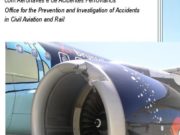EASA Lays Groundwork for VTOL Aircraft
The European Union Aviation Safety Agent (EASA) said today that it has taken a first…
Viewing 1 - 6 of 6 results
The European Union Aviation Safety Agent (EASA) said today that it has taken a first…
by FSF Editorial Staff

The European Aviation Safety Agency (EASA) is warning airport operators that some of the docking…
by FSF Editorial Staff
Following reports that Japan’s Kobe Steel Ltd. may have shipped non-conforming materials to its customers,…
by FSF Editorial Staff
Investigative authorities in 18 countries addressed a total of 88 aviation safety recommendations to the…
by FSF Editorial Staff

European Aviation Safety Agency (EASA) member states recorded 16 accidents involving commercial air transport airplanes…
by FSF Editorial Staff
News, Fitness for Duty, Safety Regulation
Proposed new rules prompted by Germanwings crash.
by FSF Editorial Staff
